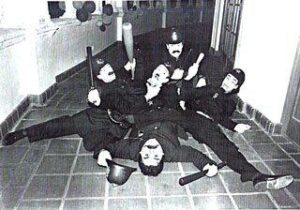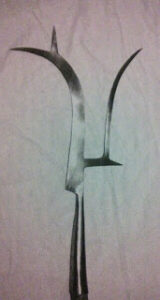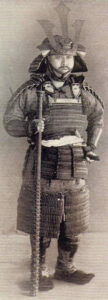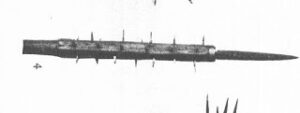
The Monkeysphere.








For today’s blog I will make some observations about how some people approach problems and also give you a simple recipe for when you need quick and simple.
I have had the misfortune to work with certain individuals that are quite incapable of doing things simply.
Some have even been considered “negative manpower” in that when they were involved in a job we needed more people to compensate for all the speedbumps they threw in our way and spanners they cast in the works.
It is quite incomprehensible to them that equal or superior results may be achieved by simpler means.
If they were in a fight and their attacker fell down they would probably go to ground themselves and try to apply some fancy holding technique.
Simply stomping on the attacker's leg and running away would never occur.
I am reminded of this since the other day I remembered that we had some eggs that were due to be used up. An omelette would be nice, I decided.
I recalled that somewhere in my collection of recipes was directions to make an omelette.
There was something about waiting 30 seconds and then bringing the edges into the centre, waiting another 30 seconds and doing something else, then another 30 secs and so on.
Sitting at work I decided to see if I could find this method on-line. I websearched “30 second omelette” and to my surprise got methods for cooking omelette in only 30 seconds!
Much mumbo-jumbo seems to have been written about the difficulty of making perfect omelettes!
The following may not be perfect or the best-ever, but I doubt you will be disappointed!
The basic method is this:
Add salt, pepper and three eggs to a bowl and beat with a balloon whisk or fork until mixed evenly.
Heat your frying pan good and hot. I use oil but add a blob of butter if I have some. Let the butter melt and wait until it just browns (or a few moments before!)
Give your eggs a final whisk and in one smooth, quick action pour the mix into the pan.
You now just swirl the mix around the pan and shake the pan to spread it evenly. Mine seem to take a little more than 30 secs but I am a little cautious with the heat.
Watch for when some of the egg is still liquid but cannot be sloshed around over the rest of the omelette. Underside should be golden brown.
This is when to add the filling and fold the sides over. The remaining “wetness” helps glue the flap over and will cook from residual heat while you are sliding the omelette onto the plate.
I like to use garlic salt rather than plain salt.
Some herbs or Worcestershire, soy or tabasco sauce added to the mix is not bad either.
I had a single rasher of bacon to use up so shredded this and fried it in the pan bottom before adding the omelette mix.
While I was writing this I came across a method for cooking an omelette in a bag claimed to be a “kitchen hack”. “Only” takes 13 minutes!